I have a digital weather station with a wireless outdoor sensor. In the photo, the top right quadrant of the display shows temperature and relative humidity for outdoors (6.2°C/94%) and indoors (21.6°C/55%).
I find this indoor-outdoor thing fascinating for some reason and revel in looking at the numbers. But when I do, I always end up asking myself if the air outside has more or less water vapor in it than the air inside. Simple question, which is more than can be said for the answer. Using the ideal gas law, the calculation of absolute humidity from temperature and relative humidity requires an added algorithm that generates saturation vapor pressure as a function of temperature, which complicates things a bit.
Formula for calculating absolute humidity
In the formula below, temperature (T) is expressed in degrees Celsius, relative humidity (rh) is expressed in %, and e is the base of natural logarithms 2.71828 [raised to the power of the contents of the square brackets]:
Absolute Humidity (grams/m3) = 6.112 × e^[(17.67 × T)/(T+243.5)] × rh × 18.02
(273.15+T) × 100 × 0.08314
which simplifies to
Absolute Humidity (grams/m3) = 6.112 × e^[(17.67 × T)/(T+243.5)] × rh × 2.1674
(273.15+T)
This formula includes an expression for saturation vapor pressure (Bolton 1980) accurate to 0.1% over the temperature range -30°C≤T≤35°C (text edited 30.08.2021, Bolton 1980 link updated 15.01.2024)
– – – –
gif format (decimal separator = .)
gif format (decimal separator = ,)
jpg format (decimal separator = .)
jpg format (decimal separator = ,)
– – – –
Additional notes for students
Strategy for computing absolute humidity, defined as density in g/m^3 of water vapor, from temperature (T) and relative humidity (rh):
1. Water vapor is a gas whose behavior approximates that of an ideal gas at normally encountered atmospheric temperatures.
2. We can apply the ideal gas equation PV = nRT. The gas constant R and the variables T and V are known in this case (T is measured, V = 1 m3), but we need to calculate P before we can solve for n.
3. To obtain a value for P, we can use the following variant[REF, eq.10] of the Magnus-Tetens formula which generates saturation vapor pressure Psat (hectopascals) as a function of temperature T (Celsius):
Psat = 6.112 × e^[(17.67 × T)/(T+243.5)]
4. Psat is the pressure when the relative humidity is 100%. To compute the pressure P for any value of relative humidity expressed in %, we multiply the expression for Psat by the factor (rh/100):
P = 6.112 × e^[(17.67 × T)/(T+243.5)] × (rh/100)
5. We now know P, V, R, T and can solve for n, which is the amount of water vapor in moles. This value is then multiplied by 18.02 – the molecular weight of water – to give the answer in grams.
6. Summary:
The formula for absolute humidity is derived from the ideal gas equation. It gives a statement of n solely in terms of the variables temperature (T) and relative humidity (rh). Pressure is computed as a function of both these variables; the volume is specified (1 m3) and the gas constant R is known.
– – – –
UPDATES
– – – –
January 2024: This paper, with 42 authors from 14 of the world’s leading metrology laboratories, takes up the vexed issue of finding a cause for apparent violations of the exponential decay law which have been claimed to be due to space weather phenomena, in particular to neutrinos emitted from the Sun or dark matter. This paper finds an explanation much closer to home, by correlating ambient humidity with decay process residuals and discovering linear relationships.
These results have been obtained using the simple expedient of taking temperature and relative humidity data from weather stations local to metrology labs and applying the formulas originated and published on CarnotCycle blog for absolute humidity (2012) and dewpoint (2017).
CarnotCycle writes: Absolute humidity (AH) is an intensive variable (ML^-3) which acts as a force driving humidity variations in the direction of equilibrium. As AH levels in the local environment rise or fall, so will AH levels in the laboratory. It can thus be expected that seasonal variations in AH will likely correlate with variations in laboratory measurements influenced by water vapor density.
https://iopscience.iop.org/article/10.1088/1681-7575/ad0c9f
– – – –
La Formula Magica
November 2023: Italian home automation site inDomus is featuring a Home Assistant-based project to help users determine when the conditions are right for opening windows to dehumidify the interior i.e. when the absolute humidity outdoors is lower than the absolute humidity indoors. To do this they make use of the absolute humidity computation formula developed and published here on CarnotCycle blog which they graciously refer to as ‘the magic formula’. Mille grazie, inDomus!
– – – –
Absolute humidity: guidance on ventilation
October 2023: Kudos to Jan Nikolas Dicke for this useful online indoor/outdoor absolute humidity calculator based on the computation formula developed and published here on CarnotCycle, supported by clarifying calculations on the effect of opening the windows. All you need is a weather station with an outdoor sensor like the one illustrated in the header photo of this post.
https://jandicke.net/tools/index.php
– – – –
September 2023: It’s taken a couple of years for this blogpost to surface on my referrer list but it’s an interesting one to read. The subject matter is familiar – using outdoor and indoor absolute humidity measurements calculated with the formula originated and published by CarnotCycle blog to control water vapor density in cellar spaces prone to problems with mold and its early stage manifestation commonly known as mildew.
Electrotech engineer Daniel Glaser’s blogpost is remarkable for its technical thoroughness, especially with regard to the accuracy limits of vapor density formulas on the one hand and measurement error of RH&T sensors on the other. His sensor preferences include my personal favorite, the BME280 whose I2C protocol is compatible with both ESP32 and ESP8266 microcontrollers.
https://the78mole.de/the-magic-of-absolute-humidity/
– – – –
Simulating optimized dehumidifier performance
March 2023: In this mathematical modeling paper from Shandong University PRC and University of Nottingham UK published by the journal Energy, formulas for Mixing Ratio and Specific Humidity (where Pvap is the equilibrium vapor pressure for the dessicant solution) are calculated from atmospheric pressure, temperature and relative humidity using the absolute humidity computation formula originated and published here by CarnotCycle blog.
https://sci-hub.se/downloads/2020-07-20/36/li2019.pdf
– – – –
Getting smart with sensor deployment
February 2023: Sensors are increasingly used for monitoring the environment, but how many of them do we need to deploy in sites of interest? And what about areas of limited access? Researchers at the University of Exeter in the UK have used cluster analysis to address these questions, and in so doing have made innovative use of the absolute humidity computation formula originated and published here by CarnotCycle blog.
Download the paper “A cluster analysis approach to sampling domestic properties for sensor deployment” : https://ore.exeter.ac.uk/repository/handle/10871/132393
– – – –
Absolute Humidity set to play a role in influenza forecasting
December 2022: A study published in Hygiene and Environmental Health Advances (December 2022) shows that influenza incidence is linked to low absolute humidity in the previous 1-2 weeks. The study was conducted using temperature and relative humidity measurements collected by NOAA in New York State, with absolute humidity calculated from this data using the formula published here by CarnotCycle. The authors state that the study’s findings can help develop an influenza forecasting model with its implied connotations for public health decision making.
Link: https://www.sciencedirect.com/science/article/pii/S277304922200040X
– – – –
Fixing long-term stability issues will give PSCs a bright future
September 2022: Perovskite Solar Cells (PSCs) are a fast-advancing solar technology with a promising combination of high efficiency and low production costs. The big challenge for PSCs is long-term stability and the prevention of degradation by moisture. CarnotCycle is pleased to note that the absolute humidity computation formula published by this blog is proving useful in quantifying the uptake of water by perovskite films and thereby enhancing understanding of moisture-associated degradation processes.
Link: Detection and Estimation of Moisture in Hybrid Perovskite Photovoltaic Films
– – – –
Formula used to study effects of humidity on hospital cleanroom processes
August 2022: A recent study from the renowned Uppsala University.
Link: https://www.sciencedirect.com/science/article/pii/S0939641122001205
– – – –
Absolute humidity a key factor in respiratory disease mortality, suggests research
May 2022: A paper entitled “The role of absolute humidity in mortality in Guangzhou, a hot and wet city of South China” published by Environmental Health and Preventive Medicine in November 2021, concludes that absolute humidity is a significant factor in the mortality of respiratory disease, and that this finding has important implications for the development of public health measures to reduce its impact. The authors used the formula published here by CarnotCycle to calculate absolute humidity from temperature and relative humidity data collected over 5 years in Guangzhou City.
https://link.springer.com/article/10.1186/s12199-021-01030-3
– – – –
Formula increases precision of Air Quality Sensor
February 2022: The Adafruit SGP30 is an indoor air quality monitoring sensor that detects a range of Volatile Organic Compounds (VOCs) and H2, returning a Total Volatile Organic Compound (TVOC) reading and an equivalent carbon dioxide (eCO2) reading based on H2 concentration. When coupled with a temperature and relative humidity sensor like the DHT22, the absolute humidity computation formula published here by CarnotCycle can be used as a compensation factor to increase precision of TVOC and eCO2.
Further details and references can be found in this paper published in January 2022 by Journal of Sensors and Sensor Systems:
https://jsss.copernicus.org/articles/11/29/2022/jsss-11-29-2022.pdf
– – – –
Lions utilize humid air to increase the range of their roar
December 2021: Researchers at the Universities of Oxford, Montpellier and Pretoria have discovered that African lions prefer to roar when atmospheric absolute humidity, as measured by the formula published here by CarnotCycle, is higher. This suggests lions instinctively know that moist air absorbs less energy than dry air, making their territorial roar louder and carrying further. The lion paper, submitted in November 2021 is the first of its kind and is available on the HAL open access archive via this link: https://hal.archives-ouvertes.fr/hal-03426006
[As an aside – the author of CarnotCycle blog noticed this characteristic of moist air many years ago when living under the flight path of jets coming into Heathrow Airport. On days when the humidity was high, the sound of Concorde was absolutely deafening. On other days it was tolerable.]
– – – –
WiFi enabled Home Automation


November 2021: In connexion with the Absolute Humidity conversion formula published here, CarnotCycle has had some referrals from this well-organized IoT Home Automation concept site which uses AI technology to bridge between wireless devices and an RF transceiver as a central controller. The site features a lively discussion forum and webshop.
The microcontroller they build their wireless automation concept around is the ESP8266 with programming in the Arduino IDE environment. Although superseded in some respects by the ESP32 with its Bluetooth capability and greater number of GPIOs, the ESP8266 is still a very capable microcontroller whose power requirements are ideally suited to the space-saving rechargeable flat-pouch 3.7V LiPo battery.
– – – –
Getting the best out of Temperature and Humidity sensors
September 2021: From GitHub, a simple way to extend the capability of inexpensive temperature and humidity sensors commonly used in home automation systems.
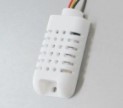
Use them to get four comfort parameters:
1. Temperature – an essential parameter for automating indoor comfort
2. Relative Humidity – the degree of atmospheric water vapor saturation, which gives a guide to comfort but varies with temperature for a given mass of vapor per unit volume
3. Absolute Humidity – independent of temperature and a key parameter for humidity control systems, especially useful for basements and crawlspaces
4. Dew Point Temperature – considered to be a more dependable parameter than relative humidity for assessing comfort, especially in warmer weather
The program uses the absolute humidity conversion formula (Mander 2012) and the dew point computation formula (Mander 2017), both published by CarnotCycle blog.
https://github.com/nielstron/humidity_control
– – – –
Formula used to study user comfort in sheet metal clad homes in Kenya
July 2021: A paper has been published in Africa Habitat Review Journal entitled “Thermal Conditions in Sheet Metal Clad Residential Buildings”. Using the absolute humidity conversion formula (Mander 2012) published by CarnotCycle blog, the research studied the thermal comfort and humidity conditions of simple galvanized sheet metal dwellings, noting that ventilation is commonly an issue and that the combination of high temperatures and high humidity is disruptive to sleep patterns. The paper also expresses the need for indoor thermal environment research to be conducted in tropical highland areas of Africa as available literature is based on studies from abroad.
http://uonjournals.uonbi.ac.ke/ojs/index.php/ahr/article/view/665
– – – –
Formula assists in study of shorebird habitats

May 2021: Researchers in Australia have used the absolute humidity conversion formula (Mander 2012) published by CarnotCycle blog to assess beach wrack habitats in relation to shorebird foraging and roosting behavior. Beach wrack is the mass of seaweed stuff washed up by the tide, which forms important microhabitats for these birds. Clearance of beach wrack by tidy-minded coastal authorities is uncool because it drives population declines in many shorebirds and harms biodiversity.
Link to research article abstract:
https://besjournals.onlinelibrary.wiley.com/doi/10.1111/1365-2664.13865
– – – –
Formula finds use in Antarctic climate research
December 2020: The absolute humidity conversion formula (Mander 2012) published by CarnotCycle blog is utilized for mapping Polar air mass movements in “Summer aerosol measurements over the East Antarctic seasonal ice zone” published as preprint in Atmospheric Chemistry and Physics.
https://acp.copernicus.org/preprints/acp-2020-1213/acp-2020-1213.pdf
– – – –
Formula finds use in forest fire prediction
November 2020:
“During feature engineering, our team hypothesized that absolute humidity can provide additional information that would help with forest fire prediction.” [Google translation]
https://manualestutor.com/3-consejos-para-proyectos-de-aprendizaje-automatico-por-primera-vez/
Use browser translation app if needed – original in Spanish. It’s interesting stuff.
– – – –
October 2020: Kudos to Kibis for this heads-up on Hardware.fr
– – – –
Absolute Humidity a significant factor in coronavirus transmission
September 2020: Using weather datasets from USA, statistical tests on absolute humidity values generated by my formula reveal that this parameter correlates significantly with coronavirus transmission and associated fatalities.
Download pdf from
http://www.sciencepublishinggroup.com/journal/paperinfo?journalid=275&doi=10.11648/j.bsi.20200503.12
– – – –
Calculate Absolute Humidity at altitude from radiosonde data
July 2020: Thank you to former research engineer Richard Seymour for pointing the way to this application of the absolute humidity computation formula. Answering a question on Quora, Richard gave a link to the University of Wyoming’s radiosonde site operated by the Department of Atmospheric Science. Amazing resource of worldwide atmospheric soundings with data going right back to 1973!
I used an Excel spreadsheet to compute AH from the simultaneously measured RH(%) and T(°C) radiosonde data for intervals of approx. 1 km up to 9 km, and used the line chart tool to graph the data shown above. Fascinating to see the altitude distribution of water vapor in the atmosphere above Long Island on a July day.
Link to Quora
https://www.quora.com/Where-can-I-find-data-on-absolute-humidity-at-altitude
Link to University of Wyoming’s Atmospheric Soundings site
http://weather.uwyo.edu/upperair/sounding.html
– – – –
Meteorologist app discovers the formula
June 2020: Meteorologist is a free weather program for OS X. Here’s the link to the discussion about adding absolute humidity as a display option:
https://sourceforge.net/p/heat-meteo/discussion/386598/thread/f7fbd3542d/
– – – –
Carbon dioxide and radon gas emissions from boreholes and wells
March 2020: Following on from the borehole research presented in September 2019 (see below), the same authors have penned another paper which utilizes the absolute humidity computation formula in studying the effect of atmospheric conditions on carbon dioxide and radon gas emissions from an abandoned water well in northern Israel.
Link: https://www.sciencedirect.com/science/article/pii/S004896972031370X (pay to view)
– – – –
Assessing the feasibility of preserving an historic building in a
sub-tropical climate
March 2020: The Conservation Office in Hong Kong has used the AH computation formula as part of the methodology of a one-year environmental monitoring program to study the feasibility of preserving the fabric and fittings of an historic building without the installation of an air-conditioning system. The climate in Hong Kong is sub-tropical for nearly half the year.
https://www.tandfonline.com/doi/full/10.1080/00393630.2018.1486092
– – – –
Absolute Humidity a strong factor in the seasonality of influenza-like illness in Australia
January 2020: This is one of the conclusions of a thesis submitted in March 2019 for an MPhil in Applied Mathematics at The University of Adelaide, South Australia. The thesis, which uses my formula to compute AH from RH and T data (measured simultaneously at the same location) is entitled “Using approximate Bayesian computation and machine learning model selection techniques to understand the impact of climate on seasonal influenza-like illness in Australia”
If you’re into applications of stochastic models in climate science, this is well worth a read.
See Jessica Penfold’s thesis online at
https://digital.library.adelaide.edu.au/dspace/bitstream/2440/121360/1/Penfold2019_MPhil.pdf
– – – –
Formula used to study the effect of water vapor on combustion of liquid fuel sprays
October 2019: Researchers from the University of Bremen and the Leibniz Institute for Materials Engineering, Bremen, Germany have published a paper in Experimental Thermal and Fluid Science.
The authors comment in the abstract of the paper:
“During spray combustion, the complex oxidizing atmosphere makes the direct experimental investigation of droplet evaporation and combustion challenging. Within this study, the effects of water vapor as well as the concentrations of oxygen and nitrogen in the atmosphere on the single isolated droplet combustion were experimentally investigated using a high-speed digital camera.”
https://www.sciencedirect.com/science/article/pii/S0894177719303693 [Abstract]
– – – –
Formula enables water vapor to be used as a tracer gas
September 2019: My absolute humidity computation formula is in effect a transform that re-expresses relative humidity (RH) and temperature (T) inputs as mass per unit volume. Simultaneous monitoring of RH and T thus functions as a gas analyzer quantifying water vapor concentration at the point of measurement.
An array of RH & T sensors operating continuously can be used to track movements of water vapor as a tracer gas in a monitored space such as a borehole, and it is this ability which has been utilized in a study entitled “Mechanisms Controlling Air Stratification Within a Large Diameter Borehole and Atmospheric Exchange” published in the Journal of Geophysical Research.
Using water vapor and CO2 as independent tracer gases enabled identification of two remarkably different air transport mechanisms occurring during winter and summer in a 3.4 m diameter, 59 m deep borehole in an arid climate region. The study’s findings in relation to large diameter boreholes or shafts have a “clear implication for potential emissions of GHGs and toxic vapor from water tables to the atmosphere in contaminated sites”, the authors concluded.
link: https://agupubs.onlinelibrary.wiley.com/doi/pdf/10.1029/2018JF004729 [Abstract]
– – – –
Formula used in study of seasonal dynamics of influenza in Brazil

August 2019: My absolute humidity computation formula has found use in the paper Dinâmica sazonal da influenza no Brasil: a importância da latitude e do clima (Seasonal dynamics of influenza in Brazil: the importance of latitude and climate) by Alexandra Almeida of the National School of Public Health, FIOCRUZ.
This paper features some seriously cool math. Seasonality was tested for using wavelet decomposition (a modern form of Fourier analysis) and once found, circular statistics was used to generate data to describe the detected periodic behavior.
“The climate variables initially considered in the study are: maximum, average and minimum temperature (°C), relative humidity (%), precipitation (mm) and insolation (hours). From the climate variables provided by INMET, we compute two other variables reported as important in the literature: the maximum weekly temperature variation (difference between maximum and minimum daily temperature, in °C) and absolute humidity (grams/m3) (MANDER, 2012). [Google translate]
link: https://www.arca.fiocruz.br/bitstream/icict/34080/2/ve_Alexandra_Ribeiro_ENSP_2018 [Abstract in English plus two pre-prints submitted respectively to Elsevier and BMC Infectious diseases: 1) Seasonal dynamics of influenza in Brazil: the latitude effect. 2) Influenza in the tropics: the facets of humidity]
– – – –
Formula recommended on France’s knowledge-sharing forum Futura

“On [blogpost URL] there are links to articles to control fans to dehumidify a cellar. Everything is there. Even a link to the formula to calculate the dew point if you want to check that the walls/floors reach it and you want to put a condition on it.”
– – – –
Formula used in Basement/Crawlspace Humidity Control System
May 2019: The absolute humidity conversion formula (Mander 2012) published by CarnotCycle blog has been used in an Arduino project whose aim is to “intelligently reduce the moisture in your basement/crawlspace to help control mildew growth and lower your heating/cooling bill”.
https://create.arduino.cc/projecthub/chuygen/basement-crawlspace-ventilation-system-dcf98f
The author writes
“After running the ventilation system in my crawlspace for the last couple of months with zero hangs and with a peak relative humidity of greater than 95% after the leak from my hot water heater it has successfully dropped the relative humidity to less than 50%. The ventilation system is an on-going control system that works!”
– – – –
Formula used to demonstrate the effect of absolute humidity on flu virus counts
March 2019:
“Based on the agreement between the results of the linear and nonlinear models, AH had a stronger effect on all influenza virus counts than RH. Unlike RH, which measures the air saturation point of water [vapor] and varies by indoor versus outdoor location during the winter (the season of influenza activity in temperate climates), AH measures the actual amount of water [vapor] in the air, regardless of temperature, and is consistently low indoors and outdoors during the winter (reference 30). That might explain the consistent effect of AH on both influenza virus types and the strength of the association found in this study.”
“AH was defined as the weight of water vapor per unit volume of air and was expressed as the number of grams per cubic meter. Since AH data were not available from Environment Canada, the following formula was used to calculate AH, based on the available temperature (T) and RH (reference 32: CarnotCycle): AH = [6.112 × e^[(17.67 × T)/(T+243.5)] × RH × 2.1674}/(273.15 × T)”
https://aem.asm.org/content/aem/85/6/e02426-18.full.pdf
– – – –
Formula used with Bosch BME280 to determine sensor altitude or sea level pressure
January 2019: My absolute humidity computation formula has found use in an application on esphomelib, a coding library for WiFi-enabled ESP microprocessors.
https://esphomelib.com/esphomeyaml/cookbook/bme280_environment.html
– – – –
Formula used in prediction of influenza cases
November 2018:
Link: https://healthfully.home.blog/2018/11/05/summary/
– – – –
Formula used in study of environmental factors affecting sleep
April 2018: Researchers in Thailand have made use of my absolute humidity (AH) computation formula in a paper published in the Journal of Clinical Sleep Medicine, April 2018.
Link: http://jcsm.aasm.org/ViewAbstract.aspx?pid=31237
– – – –
Formula gets praise on GitHub
April 2018: My formula has found a new application in HappyBee, a companion set of features to complement ecobee WiFi thermostats. The HappyBee suite includes humidity normalization using a heat recovery ventilator.
Link: https://github.com/ilyabelkin/HappyBee#happybee
– – – –
Formula cited in doctoral dissertation concerning GNSS positioning accuracy
October 2017: A doctoral dissertation from the University of Connecticut has used my absolute humidity (AH) computation formula to quantify real-time kinematic (RTK) positioning with the effect of ground-level AH, which theory and previous research suggests can degrade global navigation satellite system (GNSS) positioning accuracy.
Link: http://opencommons.uconn.edu/cgi/viewcontent.cgi?article=7849&context=dissertations
– – – –
A neat display of RH, T and AH data
September 2017: This automated data display from a website in Austria is among the best I have seen. Outdoor measurements of RH (%) and T (Celsius) are taken every 10 minutes and fitted to a common 0 -100 scale, which also serves to plot computed AH (g/m^3).
The displayed segment captures the mirror-image movements of RH (blue line) as T (yellow line) rises and falls while AH (red line) remains relatively constant. This neatly visualizes how water vapor density and temperature together determine relative humidity.
– – – –
Formula computes real time AH with DHT22 sensor on single board computer
June 2017: Single board computers provide low-cost solutions to automation and testing. On element14.com a BeagleBone Black Wireless equipped with a DHT22 RH&T sensor has been used to monitor outdoor and indoor temperature and humidity using my formula to enable AH computations to be processed in real time.
https://www.element14.com/community/roadTestReviews/2398/l/BeagleBoard.org-BBB-Wireless-BBBWL-SC-562
– – – –
Formula features in Russian Arduino project on YouTube
April 2017: My formula makes its first live appearance on YouTube. The presentation concerns a humidity/temperature monitoring and management system installed in a cellar affected by mould problems. If you don’t speak Russian don’t worry, the images of the installation give you the gist of what this project is about.
See the YouTube video here:
https://www.youtube.com/watch?v=SO1yugxahpk
– – – –
Formula recommended for use in monitoring comfort levels for exotic pets
March 2017: A post has appeared on Reddit concerning an Arduino Uno with T&RH sensor and LCD screen, which the poster is using to improve temperature and humidity monitoring of a pet’s habitat – in this particular case a Bearded Dragon (not the one illustrated).
The post has attracted much interested discussion and comment, including a recommendation from one participant to use AH rather than RH, citing my conversion formula. The rationale for the change is so neatly expressed that I would like to quote it:
“May I recommend absolute humidity instead of relative? Relative humidity only tells you how “full” the air is of moisture, and it’s entirely dependent on temperature; the same amount of moisture will read lower relative humidity at higher temperatures, and vice versa. Whereas absolute humidity is measured in grams of water per cubic meter of air. You can implement this simple conversion formula in your code: (URL for this blogpost)
0-2 is extremely dry, 6-12 is your average indoors, and 30 is like an Amazon rainforest.”
See the Reddit post here:
https://www.reddit.com/r/arduino/comments/5ysmo5/i_noticed_my_bearded_dragons_habitat_could_use_a/
– – – –
Interesting discussion of value of AH vs RH on Reddit
February 2017:
Link: https://www.reddit.com/r/dataisbeautiful/comments/5u50z4/comparison_between_relative_humidity_which_is/
– – – –
Igor uses my formula to keep his cellar dry
October 2016: I am impressed by this basement humidity control system developed by Igor and reported on Amperka.ru forum.
Inside the short pipe is a fan equipped with a 3D-printed circumferential seal. The fan replaces basement air with outdoor air, and is activated when absolute humidity in the cellar is 0.5 g/m^3 higher than in the street, subject to the condition that the temperature of the outdoor air is lower. This ensures that water in the cellar walls is drawn into the vapor phase and pumped out; the reverse process cannot occur. на русском здесь.
– – – –
Formula cited in doctoral dissertation concerning local weather and infectious disease
Summer 2016: My AH formula has been cited in a doctoral dissertation entitled “Seasonality, local weather and infectious disease: effects of heat and humidity on local risk for urinary tract infections and Legionella pneumonia”
This can be downloaded from http://ir.uiowa.edu/etd/5852
– – – –
Formula powers online RH←→AH calculator
March 2016: German website rechneronline.de is using my formula to power an online RH/AH conversion calculator.
– – – –
Formula cited in academic research paper
January 2016: A research article in Landscape Ecology (October 2015) exploring microclimatic patterns in urban environments across the United States has used my formula to compute absolute humidity from temperature and relative humidity data.
– – – –
Formula finds use in humidity control unit
August 2015: Open source software/hardware project Arduino is using my absolute humidity formula in a microcontroller designed to control humidity in basements:
“The whole idea is to measure the temperature and relative humidity in the basement and on the street, on the basis of temperature and relative humidity to calculate the absolute humidity and make a decision on the inclusion of the exhaust fan in the basement. The theory for the calculation is set forth here – carnotcycle.wordpress.com/2012/08/04/how-to-convert-relative-humidity-to-absolute-humidity.” на русском здесь.
More photos on this link (text in Russian):http://arduino.ru/forum/proekty/kontrol-vlazhnosti-podvala-arduino-pro-mini
– – – –
AH computation procedure applied in calibration of NASA weather satellite
June 2015: My general procedure for computing AH from RH and T has been applied in the absolute calibration of NASA’s Cyclone Global Navigation Satellite System (CYGNSS), specifically in relation to the RH data provided by Climate Forecast System Reanalysis (CFSR). The only change to my formula is that Psat is calculated using the August-Roche-Magnus expression rather than the Bolton expression.

The CYGNSS system, comprising a network of eight satellites, is designed to improve hurricane intensity forecasts and was launched on 15 December 2016.
Reference: ddchen.net/publications (Technical report “An Antenna Temperature Model for CYGNSS” June 2015)
– – – –
Formula used in greenhouse soil pipe temperature-humidity management system
August 2014: Probably the first published application of the AH computation formula originated and published by CarnotCycle blog in August 2012. It first surfaced during a Google search in July 2023. The PDF download is in the Dutch language which I can’t read, but putting the summary and conclusions in a translation engine gave me the gist of it. Fascinating stuff.
– – – –
Formula used by US Department of Energy in Radiological Risk Assessment
June 2014: In its report on disused uranium mines, Legacy Management at DoE used my formula for computing absolute humidity as one of the meteorological parameters involved in modeling radiological risk assessment.
– – – –













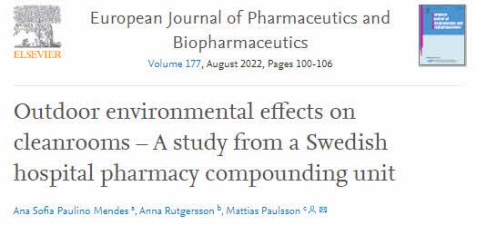







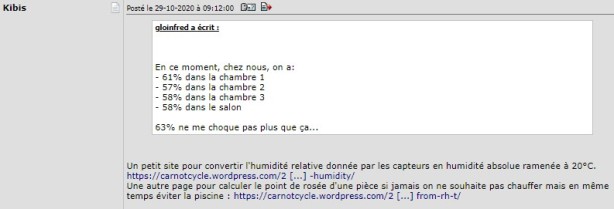





















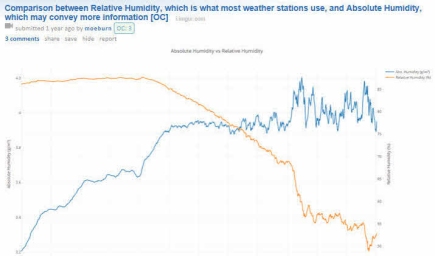
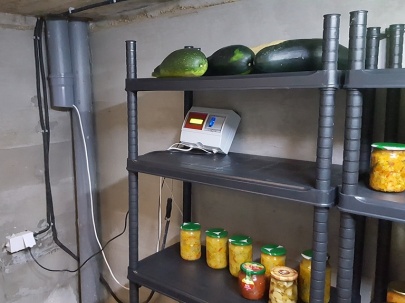


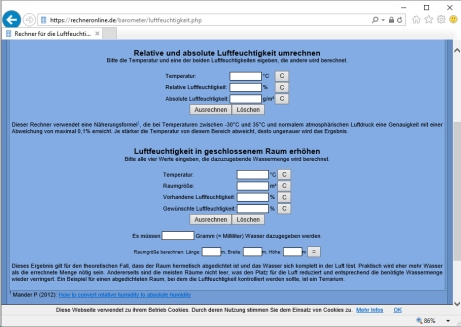


Hi Psylicib, thank you for the kind words and the question.
The error is in the coding for e^[(17,67 × T)/(T+243,5)]. This is not a logarithm to base e, but the value of base e raised to an exponent. If you replace your coding
=( 6,112 * B2 * 2,1674 * LOG(( ( 17,67 * A2 ) / ( A2 + 243,5 ) );2,718281828 ) / ( 273,15 + A2 ) )
with
=( 6,112 * B2 * 2,1674 *EXP( ( 17,67 * A2 ) / ( A2 + 243,5 ) ) / ( 273,15 + A2 ) )
you should get the answer AbsHumidity = 7,77518 g/m3 for T = 20°C and RH = 45% and AbsHumidity = 15,5504 g/m3 for T = 20°C and RH = 90%.
Hope this helps.
LikeLike
Hello, thanks you very much for all of this.
Like “Pete says: August 1, 2021 at 08:27” i have a problem with results.
I put the equation in Excel and it’s impossible to get coherent value compared with online calculator like this one or others:
https://fr.planetcalc.com/2167/#google_vignette
Here, the equation i entered in Excel :
=( 6,112 * B2 * 2,1674 * LOG(( ( 17,67 * A2 ) / ( A2 + 243,5 ) );2,718281828 ) / ( 273,15 + A2 ) )
A2 is the temperature and B2 is relative humidity.
This equation give me the same result as this one:
=(6,112LOG((17,67A2)/(A2+243,5);2,71828182845904)B2*2,1674)/(273,15+A2)
I really don’t understand why a have little result AbsHumidity value like 0,596929387 for T°=20 et H%=45 or 1,193859578 for T°= 20 et H%=90
Thank you for any help you can give me.
LikeLike
Thanks for your formula, I have converted it to a node-red script which i will publish on my blog at some point. Now it’s sending the data from a hydrometer to my grafana graphing system!
LikeLike
11 gm^-3 sounds a bit high for a cellar if you use it for storing humidity-sensitive items.
LikeLike
Hello Marcel and thank you for the kind words. Happy to help spread awareness of your calculator. A simple ventilation-based tool for humidity management using indoor-outdoor RH&T measurements can empower people to gain improvements in living comfort with minimal expenditure. My recent update on metal-clad dwellings in Kenya is a case in point. Sharing this science for the good of all is the way to go. Regards Peter
LikeLike
Hello Peter,
thanks for your great work and for releasing it to the public.
I created a tiny online tool to calculate, if ventilating a room is currently possible without increasing the humidity (based on measurements of relative humidity and temperature inside and outside of the room).
Find the calculator here: https://rhinodevel.github.io/RoomVentHint/
And the README and full source code here: https://github.com/RhinoDevel/RoomVentHint
Greetings
Marcel Timm @ RhinoDevel.com
LikeLike
Thanks Peter
Would you say those are acceptable for a cellar, when it would be too high for timbers and the like?
LikeLike
Hi Pete, the results you should be getting from your data are approx 11 gm^-3 inside and approx 11.5 gm^-3 outside.
LikeLike
HI Peter, I tried the simplified formula with these values
Inside 21Celsius/60RH
Outside 15Celsius/90RH
I am getting results that are 0.xxx decimal order of magnitude
Should I expect values in the order of, say, 4g/m3 instead of 0.4??
I am not sure where is my error
LikeLike
[…] Taken from Carnotcycle […]
LikeLike
Hello David, happy to hear you liked the article and thank you for the question. My AH formula is based on the assumption that the behavior of water vapor approximates that of an ideal gas. The presence of other gases at low partial pressures is unlikely to make its behavior less ideal. So under these circumstances the formula should provide reasonable results within its temperature range (–30°C to +35°C).
LikeLike
Peter Mander, thank you for the great article, it was easy to apply using temperature and RH. My problem is that I’m operating at pressures varying between sea level and a deep vacuum, all the way down to ~200 mTorr (~0.00787 inHg, or ~0.2666 mbar). How can I incorporate a variable pressure into your equation? Apologies if I’m missing something obvious.
LikeLike
[…] Durante la ingeniería de características, nuestro equipo planteó la hipótesis de que la humedad absoluta puede proporcionar información adicional que ayudaría con la predicción de incendios forestales. La humedad absoluta se puede derivar de la temperatura y la humedad relativa utilizando una fórmula especial derivada aquí. […]
[Google translation]
During feature engineering, our team advanced the hypothesis that absolute humidity can provide additional information that would help with forest fire predictions. Absolute humidity can be computed from temperature and relative humidity using a special formula derived here … [CarnotCycle blog ref]
https://manualestutor.com/3-consejos-para-proyectos-de-aprendizaje-automatico-por-primera-vez/
Use browser translation app if needed – original in Spanish. It’s interesting stuff
LikeLike
Hej Christoph, thank you for the kind words. I am impressed with your project.
LikeLike
Thanks a lot for your amazing formula. I’m using when monitoring the ventilation of my house, which has a rotating heat exchange unit to warm up the incoming air. Allthough the primary prupose of the rotating heat exchanger is to transfer heat, it also inevitably transfers some humidity. Your formula allows me to monitor whether the house is loosing or gaining humidity and how much. For more information, see my project page at https://github.com/tophee/FTXcontrol-Shield
LikeLike
Hello Ben
Happy to hear the equation is proving useful, and thank you for the question. The 100 in the denominator is there because relative humidity (rh) is specified in percent. Sounds like your rh data is expressed on a 0-1 scale which would explain the anomalous result.
LikeLike
First, thanks for a killer equation–you’re absolutely (no pun intended) making my life easier.
A quick question: My absolute humidity values are off by a hundred—removing the hundred on the denominator solves that issue, naturally. Can you tell me the origin of that value, and what I might be mis-using?
LikeLike
Hi Noumon and thank you for the question. RH-AH conversion formulas such as mine apply to a single thermodynamic environment. Your problem features independent thermodynamic environments at different temperatures. I would think that direct measurement of RH in the oven is the simplest option here.
LikeLike
what to use if we want to convert ambient humidity outside into relative humidity inside an oven from 60-90C range?
LikeLike
[…] Carnotcycle – The Classical Blog on Thermodynamics. https://carnotcycle.wordpress.com/2012/08/04/how-to-convert-relative-humidity-to-absolute-humidity/ […]
LikeLike
Hello Ana-Maria and thank you for your question. The problem is that pressure P in the formula shown at point 4 is water vapor pressure, not atmospheric pressure which is a much larger number. This is why the answer you got was way too big.
To calculate relative humidity (RH) in % you need to use another formula:
RH/100 = e^[(17.67 x TD)/(243.5 + TD)] / e^[(17.67 x T)/(243.5 + T)]
This formula requires two temperatures measured in degrees Celsius, the actual air temperature T and the dew point temperature TD which you can measure in a simple way using a tin can, water, ice cubes and a thermometer. It’s a fun thing to do and this link shows you how
https://www.wikihow.com/Determine-if-Condensation-Will-Occur
Good luck with your project.
LikeLike
Hello!I have a problem for a school project I try to calculate the humidity in % from your formula at 4 point and —->>> rh= (100 *P) / (6.112* e^[(17.67 x T)/(T+243.5)]) and for instance for 28 celsius and 1000 hPa for the temperature I have 2624.6 for the humidity where is the problem? thank you very much http://www.wolframalpha.com/input/?i=100000%2F(6.112+*+2.73%5E((17.67*28)%2F(28%2B243.5)+)++)
LikeLike
Hi Peter, thank you for your elaborate answer.
LikeLike
Hello Stefan and thank you for the comment. Of course you can multiply those numbers together if you wish. I decided to keep the Bolton approximation visible in the equation to make substitution easy for those who might prefer other saturation vapor pressure approximations, such as
August-Roche-Magnus 6.1094 exp(17.625 x T)/(T + 243.04)
Buck (1981) 6.1121 exp(17.502 x T)/(T + 240.97)
US space agency NASA substituted the August-Roche-Magnus approximation for calibration purposes in its CYGNSS satellite system which monitors hurricane intensity (see Updates – June 2015)
See link below for a comparative review of SVP approximation formulae
https://cires1.colorado.edu/~voemel/vp.html
LikeLike
First, thank you for the information.
In the formula, the numerator is 6.112 x e^[(17.67 x T)/(T+243.5)] x rh x 2.1674. I don’t understand why we cannot simplify the factors 6.112 and 2.1674 further to 13.2471. Where’s my error?
LikeLike
Thanks to Markus for providing coding for the AH formula in Ruby and C.
LikeLike
Thanks Peter.
LikeLike
Hi Milan,
If I understand your question correctly, I think you are asking if there is a maximum pressure that water vapor can exert at a given temperature. The answer is yes: it is called the saturation vapor pressure, and the corresponding temperature is called the dewpoint temperature.
Saturation vapor pressure is the state of maximum relative humidity (100% rh). So using my absolute humidity formula, if you assign a value of 100 to rh, the temperature you choose will automatically be the dewpoint temperature and the formula will return the absolute humidity in g/m^3. This is the mathematical relation you are seeking, but note that it is not a linear function.
To convert g/m^3 into kg/m^3 just divide by 1000.
LikeLike
Hi Peter,
is it correct to state that Absolute Humidity is direct proportional to Dew point ?
Hum[kg/m3] = C * Tdew[Celsius]
if yes what would be exact relation ?
regards,
Milan
LikeLike
Hi Andrew and thank you for the question. This link should be helpful:
https://www.researchgate.net/post/How_does_one_convert_absolute_humidity_expressed_in_g_kg_to_g_m3
LikeLike
Hi Peter,
I’m trying to use this formula to convert large quantities of dry-bulb temperature and RH readings to absolute humidity (g/kg). I have used the formula above to convert the data to absolute humidity in g/m^3, however, have been unsuccessful in converting this information into the required form.
Any help would be greatly appreciated.
Thank you in advance
LikeLike
Thanks thanks a lot Peter. Great job and awesome site!! I’ve been searching for a formula like this to calculate directly the water evaporation in sheets of water, taking the data from weather stations which show only RH and T. And finally I found it, so you saved my a** :)
LikeLike
excellent and easy to follow work. Thanks for sharing the information
LikeLike
Hi Pavel and thank you for the question.
Thermodynamics teaches us that vapor pressure is an inherent property of substances contingent only on temperature. It is independent of atmospheric pressure, whether measured at sea level or any other altitude.
Using my formula, all you need to compute the density of water vapor at the point of measurement is the temperature and relative humidity.
LikeLike
So in a meteostation, where both actual pressure and sea level pressure is measured (altitude is known), we should use what equation construction?
LikeLike
I have fulfiled my promice at http://bit.ly/2dCM1zq
Thank You a lot!
LikeLike
Thank You! I’ll take Yours formula to my home project and report You!
LikeLike
Thank you for the question. The Psat variant I use was developed by Bolton* for meteorological purposes as a best-fit in the -30°C to +35°C temperature range. At +40°C, the accuracy is 0.18%. For accuracy better than 0.005% in the +35°C to +60°C range, you could use the Psat formula developed by Wexler; this equation is numbered (9) in Bolton’s paper.
*a mouse-over link to Bolton’s paper has been included under point 3 of “Additional notes for students”
LikeLike
What would be the accuracy of the results of this equation for temperatures above 35°C, say 35-60?
LikeLike
Thank you so much for this wonderful resource!
LikeLike
Hey Peter, thank you so much for the equations. That you bothered to put equations in so many forms is really appreciable. Great work.
Thanks! :)
LikeLike
Hello lou and thank you for your question. The mathematical constant e is not equal to 10; the approximate value is 2.718
You can read more about e here:
http://en.wikipedia.org/wiki/E_(mathematical_constant)
LikeLike
Hello,
I have tried your formula several time but the result I get is not the right one. I have one question, “in the equation where to I get the value for ‘e'”? I thought e would equal 10 but it does not come out with the correct answer.
(following lou’s question, I added text to clarify the value of ‘e’ – PM)
LikeLike
Thanks for asking Martin. Remember you’re dividing by R and multiplying by the molecular weight of water; the factor is 18.02/8.314 = 2.1674
LikeLike
I still dont get the 2.1674 factor. When you devide P/T by R, there is just R_specific left, which should be 8.3/18.02 = 0.4615 . Can you please provide details on your calculation?
LikeLike
Very interesting derivation of AH formula base on RH and T. Thank you very much!
LikeLike
You’re welcome Robert. Regarding the formula: to simplify computation the factor 10^-2 is amalgamated, along with the molecular weight of water in grams and R in m^3.hPa.K^-1.mol^-1, in the 2.1674 figure.
LikeLike
Thank you for the formula. I’ve got one question though, what happens with the factor 1/100?
At 4. it says rh/100 but at the top of the page where you’ve written the formula, 1/100 is gone.
(following Robert’s comment, I added the uncondensed formula at the top of the page to clarify the math – PM)
LikeLike
Thanks a lot for this, which I can use in my reserch work.
LikeLike
Thanks a lot for this.
LikeLike